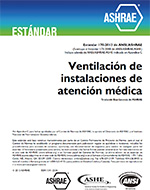Description
Click here to purchase
Local, State and Federal policy are being enacted to decarbonize the built environment and the means by which buildings are fueled/powered. Many policies are pushing for electrification of heating and transportation systems using low- or no-carbon fuels. Electrification however will result in unprecedented changes in behavior including a significant increase in connected load, as well as peak load shifts both daily, and seasonally. The electric grid will need to evolve and adapt to accept a generation mix that is majority renewable; added and dispersed generation in turn necessitates significant upgrades transmission and distribution (T&D) infrastructure and capacity. These evolutions present significant challenges to Hospitals. Healthcare institutions often achieve their paramount essential reliability and uptime by utilizing grid electricity supplemented by natural gas and fuel oil, to produce heating, cooling, normal power and/or emergency power. In an electrification scenario, the grid potentially represents a single point of catastrophic failure. This risk is greatly magnified as the grid undergoes its lengthy transition. There are technological obstacles that must be overcome before the electric system can be fully de-carbonized, and alternate fuel sources such as “Green Hydrogen” or Renewable Natural Gas can become a viable fuel source available at scale. This paper explores the risks to Hospitals from electrification and a transitioning grid. Determining the appropriate time horizon when the grid has achieved adequate resiliency to accept the full electrification of mission-critical loads, such as Hospitals, will be difficult to project due to the dynamic changes proposed on the system, including load; transmission and distribution; and generation components. Policy makers should proceed cautiously to ensure that mission-critical infrastructure is not put at risk. There is a need to develop new technologies to full commercial maturity to alleviate some of the risk described in this paper. Further, there is a need for the development of new grid reliability/resiliency metrics and benchmarks that must be reached to ensure that mission-critical infrastructure and services can be fully migrated to the grid safely. During this transition period Hospitals and other critical facilities need to take steps to reinforce emergency power systems and consider options which allow the ability to island these facilities from the grid.
Product Details
- Published:
- 2022
- Number of Pages:
- 10
- Units of Measure:
- Dual
- File Size:
- 1 file , 1.5 MB
- Product Code(s):
- D-TO-22-C032
- Note:
- This product is unavailable in Russia, Belarus




